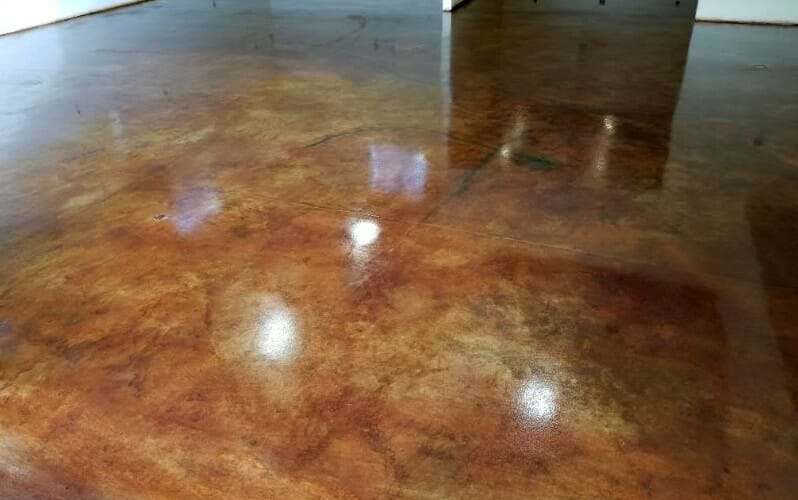Thanks to their wide variety of bright colors and ease of use, dyed concrete has become an increasingly popular option for those looking to design eye-catching, attractive patios and walkways. Dyes are semi-transparent solutions that carry different hues. Unlike stains, dyes are chemically nonreactive. Instead, their coloring agents penetrate into the surface of the concrete where they’re applied.
Water-based and solvent-based concrete dyes are available, each having certain pros and cons. For example, water-based dyes usually producer softer tones – reminiscent of pastels or watercolors. Solvent-based dyes will leave your dyed concrete with a bolder color that will last longer.
And when you combine dyes with stains, the sky is the limit for you color palette. If you can dream and design it, you can achieve it. With that said, it’s worth noting that you’ll need to have some sense of color theory (which colors you can combine to create other colors) in order to make the most of your dyed concrete.
In addition to adding a splash or color to your concrete patios, walkways, and driveway, dyed concrete can also provide the following benefits…
- Dyes can hide stains and other color/shade/discoloration spots in your concrete.
- Dyes can be used to strengthen areas where stained concrete is beginning to fade.
- Dyes can also be used to soften areas where a stain has left a too-strong color.
- Dyes have the ability to add texture to a concrete surface, creating a more interesting and attractive appearance.
- Dyes can transform plain, earthy tones and leave them looking brighter than ever before.
- Dyes can be combined to create beautiful colors and effects that are difficult to get any other way.
With that said, it’s also important to remember what dyed concrete can’t do for you.
- Dyed concrete merely enhances what’s already there – so, cracks and other flaws will not be hidden.
- Dyed concrete cannot completely mask an underlying color. If your concrete has been stained a dark shade of red, you’re not going to be able to get a light green with a dye.
- Dyed concrete will not be completely consistent or even in its coloring. There will be variations throughout, though most people find this attractive. So, whether this is a pro or a con completely depends on the look that you’re hoping to get.
- Dyes also penetrate the surface of concrete very quickly, leaving little room for error as you apply them.
And dyes don’t have to be used alone. You can add additional finishing and texturing agents on top of your dyed concrete to produce truly stunning effects. Dyed concrete can mimic gravel, grass, and any number of other natural and man-made environments. This gives you the versatility of hiding unsightly concrete structures such as drainage ditches by blending them into their surroundings.
If you’ve got concrete on your property – or you’ve got plans for some – you should seriously consider the power of dyed concrete. It can transform a bland gray slab into something that’s truly beautiful. And it’s easy enough to apply that any moderately skilled do-it-yourselfer should be able to handle the job with a little education and effort.

